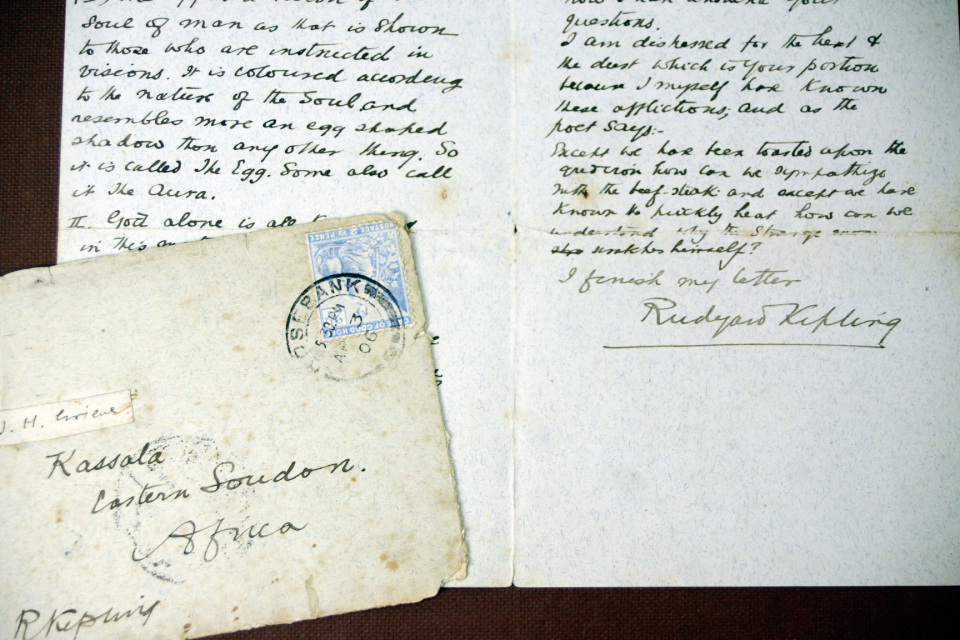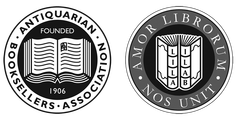- Letters & Manuscripts
- >
- Autograph Letter
Autograph Letter
Kipling, Rudyard
Published: The Woolsack, Rosebank, Capetown, Apr. 3 1906.
An autograph letter signed ‘Rudyard Kipling, to ‘The White Man at Kassala’.
Letter amounts to three written pages on hand-addressed letterhead on a folded sheet which measures 197x153 mms unfolded. There is an associated hand-addressed envelope signed by Kipling with the name J. H. Grieve overlaid on a strip of paper; the envelope is a little worn with the corners nibbled.
The White Man at Kassala turns out to be a J. H. Grieve as stipulated on the envelope.
A clean example with just a couple of tiny marks.
Kipling begins this letter somewhat humorously 'I could not read the name of the white man that sent me the letter from Kassala which is dated on the twentieth day of the second month of this (Christians) year. May Allah teach him to write perspicuously for at present he is a calamity to the stranger.'
He continues in response to three questions, regarding the more remote passages of his short story 'They', that were posed in the aforementioned letter. He answers in detail supplying information about "The Egg" which he explains 'is a vision of the soul of man ... coloured according to the nature of the soul and resembles more an egg shaped shadow than any other thing. So it is called The Egg. Some also call it the Aura.' In response to the second question he replies: 'God alone is all knowing in this matter: but it is certain that those who are blind can none the less, in a manner, see.' Finally in answer to the third question he says: 'The man would not see the woman again because there were spirits in her presence and he would have no traffic with spirits. For it is manifest that the dead are dead and the living are the living and they cannot meet. Yet the woman being a virgin and blind was permitted to entertain those innocent spirits. To him a man it was forbidden'.
He ends by sympathizing with the incredible heat and dust which the "white man" must be suffering and concludes: 'I finish my letter. Rudyard Kipling'.
This letter is particularly interesting because it is in his story 'They' that Kipling refers to his daughter Josephine who died in 1899. There are only a couple of places in his writings in which he does this as he was generally shy about revealing details regarding his life.
SOLD

